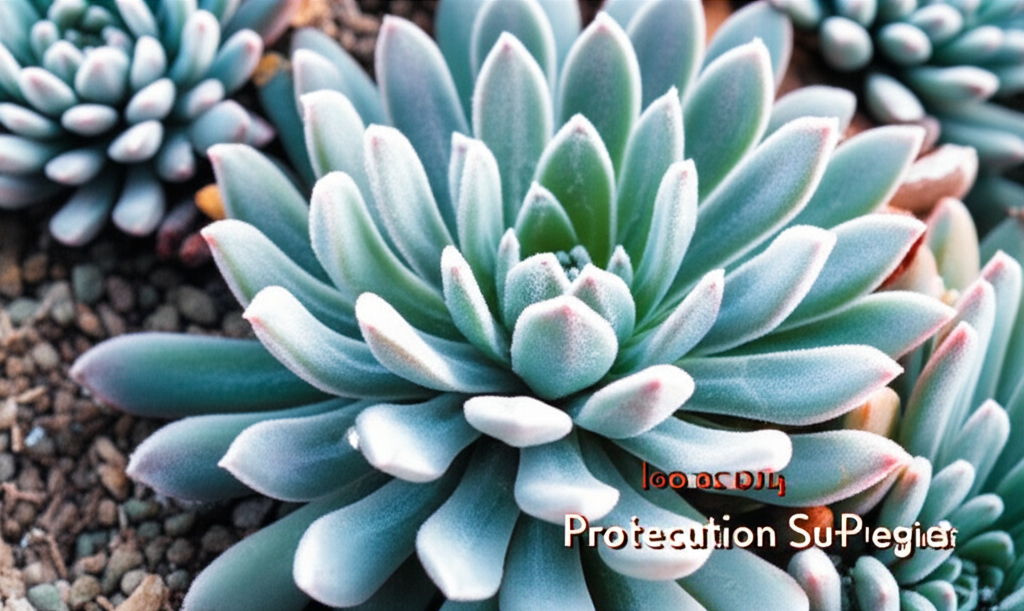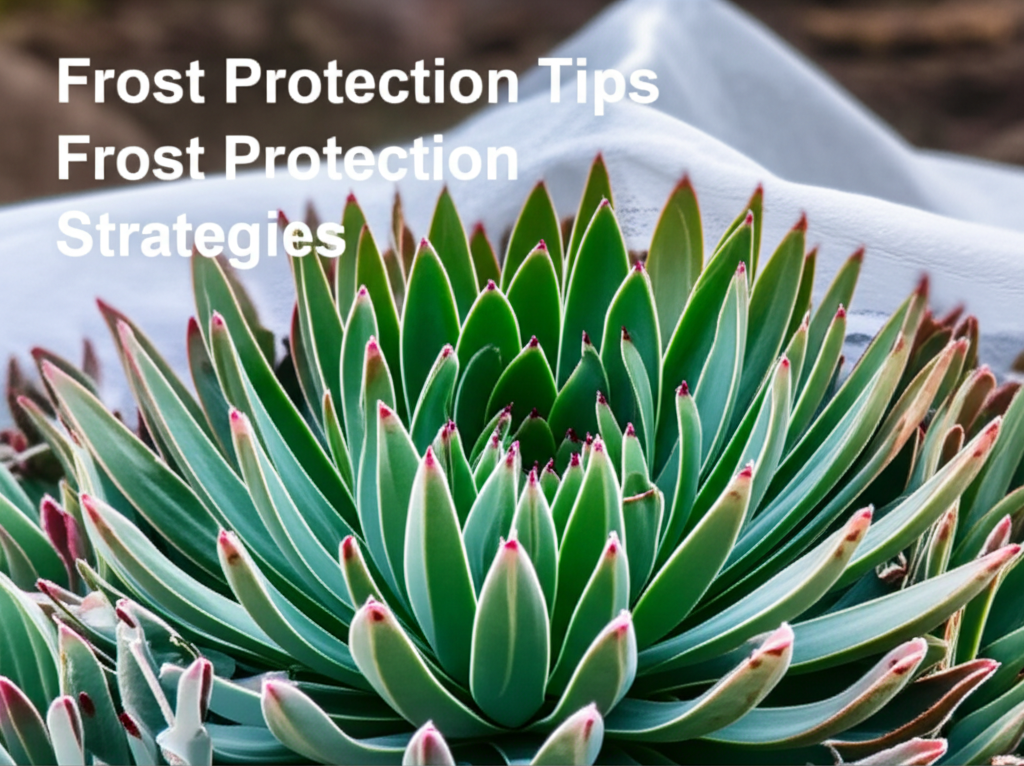Understanding the Vulnerability of Ice Plants to Frost
Ice plants, members of the Aizoaceae family, are celebrated for their unique succulent foliage, often covered in glistening, bladder-like cells that resemble ice crystals. This characteristic appearance, along with their vibrant blooms, makes them a popular choice for rock gardens, containers, and xeriscaped landscapes. However, despite their drought tolerance, many ice plant varieties are surprisingly susceptible to frost damage. Their succulent nature, which allows them to store water, also makes them vulnerable to freezing temperatures. When water within plant tissues freezes, it expands, rupturing cell walls and leading to irreversible damage. This can manifest as mushy, discolored leaves, stem rot, and in severe cases, the death of the plant. Understanding the specific frost tolerance of your ice plant variety is the first crucial step in effective protection.
Common Ice Plant Varieties and Their Frost Tolerance
While the general term “ice plant” encompasses a wide range of species and cultivars, their resilience to cold varies significantly. Some of the most popular varieties, such as Delosperma cooperi (Hardy Ice Plant), are known for their remarkable cold hardiness, often tolerating temperatures down to USDA Zone 5 (-20°F to -10°F). Other varieties, like certain species of Mesembryanthemum or Lampranthus, may only be suitable for warmer climates (USDA Zones 9-11) and require significant protection even from light frosts. It is imperative to identify the specific species or cultivar you are growing to accurately assess its frost sensitivity. Consulting reputable horticultural resources, local nurseries, or the plant’s tag will provide this vital information.
Assessing Your Local Climate and Frost Risk

A proactive approach to frost protection begins with a thorough understanding of your local climate. Key factors to consider include the average first and last frost dates for your region, the typical severity and duration of frosts, and the microclimates within your garden.
Key Frost Facts for Ice Plant Protection
| Factor | Impact on Ice Plants | Considerations for Protection |
|---|---|---|
| Average First Frost Date | Marks the beginning of potential danger. | Initiate protective measures in the weeks leading up to this date. |
| Average Last Frost Date | Indicates when protection can typically be withdrawn. | Continue monitoring forecasts and maintain protection until after this date. |
| Frost Severity | Light frost (around 30-32°F) may cause minimal damage; hard frost (below 25°F) can be lethal. | Deeper frosts require more robust protection methods. |
| Frost Duration | Prolonged freezing temperatures increase the risk of deep tissue damage. | Continuous monitoring and sustained protection are necessary for extended cold snaps. |
| Microclimates | Areas near walls, under overhangs, or in depressions may experience different temperatures. | Site selection and targeted protection are crucial for specific planting locations. |
Proactive Frost Protection Strategies: Prevention is Key
The most effective frost protection involves implementing strategies before the cold weather arrives. These measures aim to create a more favorable environment for your ice plants or to shield them from the damaging effects of frost.
Site Selection: The Foundation of Frost Resilience
Choosing the right location for your ice plants is fundamental to minimizing frost risk.
- Well-Drained Soil: Ice plants, like most succulents, abhor waterlogged conditions, which exacerbate frost damage. Ensure planting sites have excellent drainage to prevent root rot.
- Elevated Positions: Planting on slopes or mounds allows cold air to drain away, reducing the likelihood of frost settling around the plants.
- South-Facing Exposures: In cooler climates, a south-facing location benefits from maximum sun exposure, which can help warm the soil and surrounding air.
- Protection from Wind: While some air circulation is beneficial, strong, cold winds can desiccate ice plants and increase their susceptibility to frost. Planting near a sheltered wall or using windbreaks can be advantageous.
Mulching for Soil Temperature Regulation
A layer of mulch can act as an insulator, helping to regulate soil temperature and protect the roots from freezing.
- Organic Mulches: Materials like compost, bark chips, or straw can be applied around the base of the plants. Ensure the mulch layer is not too thick, as this can trap moisture and encourage rot.
- Inorganic Mulches: Gravel or decorative stones can also provide a degree of insulation and improve drainage.
- Timing is Crucial: Apply mulch after the soil has had a chance to warm up in the autumn, but before the ground begins to freeze.
Choosing Hardy Varieties
As mentioned earlier, selecting ice plant varieties known for their cold hardiness is a highly effective preventative measure, especially for gardeners in regions with unpredictable or harsh winters. Researching the USDA hardiness zones for specific cultivars is essential.
Reactive Frost Protection Strategies: When Frost is Imminent
When forecasts predict a frost, or you observe the first signs of dropping temperatures, it’s time to implement immediate protective measures. These methods create a physical barrier between the delicate ice plant foliage and the freezing air.
Covering Your Ice Plants
Creating a protective canopy is a classic and highly effective method for shielding plants from frost.
- Fabric Covers: Lightweight frost cloths, old sheets, blankets, or burlap sacks can be draped over the plants. Ensure the fabric reaches the ground to trap radiant heat from the soil. Avoid plastic sheeting, as it can condense moisture and freeze on the foliage, causing damage.
- Creating Supports: For taller or bushier ice plants, use stakes, stakes, or tomato cages to support the covering material, preventing it from directly crushing the foliage.
- Timing of Application: Cover plants as soon as a frost is predicted, typically in the late afternoon or early evening, before temperatures drop below freezing.
- Removal: Remove the covers in the morning after the frost has dissipated to allow for air circulation and sunlight exposure. Leaving covers on too long can lead to overheating or fungal diseases.
Using Cloches and Cold Frames
For smaller, container-grown ice plants, cloches or small cold frames offer excellent protection.
- Cloches: These are essentially portable, transparent covers (often made of glass or plastic) that are placed directly over individual plants.
- Cold Frames: These are more permanent, often box-like structures with a transparent lid, ideal for protecting multiple plants or a collection of containers.
- Benefits: They create a mini-greenhouse effect, trapping solar heat during the day and protecting from frost at night. Ensure adequate ventilation on warmer days to prevent overheating.
Watering Before a Frost
This is a counterintuitive but often effective strategy. Watering the soil thoroughly before a frost can help.
- How it Works: Moist soil retains heat better than dry soil. As the water in the soil cools, it releases latent heat, which can help keep the air around the plants slightly warmer.
- Timing: Water in the afternoon, allowing the surface to dry somewhat before nightfall. Avoid watering late in the evening, as wet foliage can freeze more readily.
Relocating Container-Grown Ice Plants
If your ice plants are in containers, moving them to a protected location is a straightforward solution.
- Indoors: A bright, sunny windowsill indoors is ideal.
- Garage or Shed: A frost-free garage or shed can offer adequate protection, provided there is some light.
- Under an Overhang: Moving containers closer to the house, under a porch roof, or an eave, can provide a significant buffer against frost.
Post-Frost Care and Recovery
Even with the best protection, some frost damage may occur. Proper post-frost care can help your ice plants recover and thrive.
Assessing Damage and Pruning
Once the danger of frost has passed, carefully inspect your ice plants for signs of damage.
- Identifying Damaged Tissue: Frost-damaged tissue often appears limp, discolored (brown or black), and mushy.
- When to Prune: Resist the urge to prune immediately. Wait until new growth begins to emerge in the spring. This allows you to clearly distinguish between damaged and healthy tissue.
- Pruning Techniques: Use clean, sharp pruning shears to cut back damaged stems to the nearest healthy growth. If the entire plant appears damaged, you may need to prune it back severely.
Providing Optimal Growing Conditions
After a frost event, ensure your ice plants receive the best possible conditions to encourage recovery and new growth.
- Sunlight: Provide ample sunlight, as it is crucial for photosynthesis and plant energy.
- Watering: Water moderately, allowing the soil to dry out slightly between waterings. Avoid overwatering, which can lead to root rot, especially if the plant’s root system was compromised.
- Fertilization: Hold off on fertilizing until you see signs of active new growth. Over-fertilizing a stressed plant can do more harm than good.
A Comparative Look at Frost Protection Methods
The effectiveness of different frost protection strategies can vary depending on the specific ice plant, the severity of the frost, and the gardener’s resources.
Frost Protection Methods: Pros and Cons
| Method | Pros | Cons | Best Suited For |
|---|---|---|---|
| Covering with Fabric | Inexpensive, readily available materials, effective against light to moderate frosts. | Labor-intensive for large areas, can be unsightly, requires removal and reapplication. | Individual plants or small groupings. |
| Cloches/Cold Frames | Highly effective, reusable, provides consistent protection, extends growing season. | Can be costly, limited to smaller plants or containers, requires ventilation. | Container-grown plants, seedlings, smaller specimens. |
| Watering Before Frost | Simple, requires no additional materials, leverages natural heat retention. | Effectiveness is limited to light frosts, risk of waterlogging if not done carefully. | All ice plant types, especially when combined with other methods. |
| Relocating Containers | Very effective, complete protection, simple execution. | Only applicable to container plants, requires available space in protected areas. | Container-grown ice plants. |
| Site Selection/Mulching | Proactive, long-term benefits, improves overall plant health. | Requires planning, not effective against severe or prolonged frosts alone. | All ice plants, establishes a foundation for resilience. |
Conclusion: A Multi-faceted Approach to Ice Plant Frost Protection
Safeguarding your ice plants from frost requires a combination of foresight, knowledge, and timely action. By understanding the specific needs of your ice plant varieties, assessing your local climate risks, and implementing both proactive and reactive protection strategies, you can significantly increase their chances of survival and continued bloom through cooler periods. Whether it’s choosing the right planting location, employing a layer of insulating mulch, skillfully using protective covers, or moving container specimens to safety, each step contributes to a robust defense. Remember that consistency in care, especially during periods of potential frost, is paramount. With these strategies in place, your captivating ice plants can continue to bring their unique beauty to your garden, season after season.


